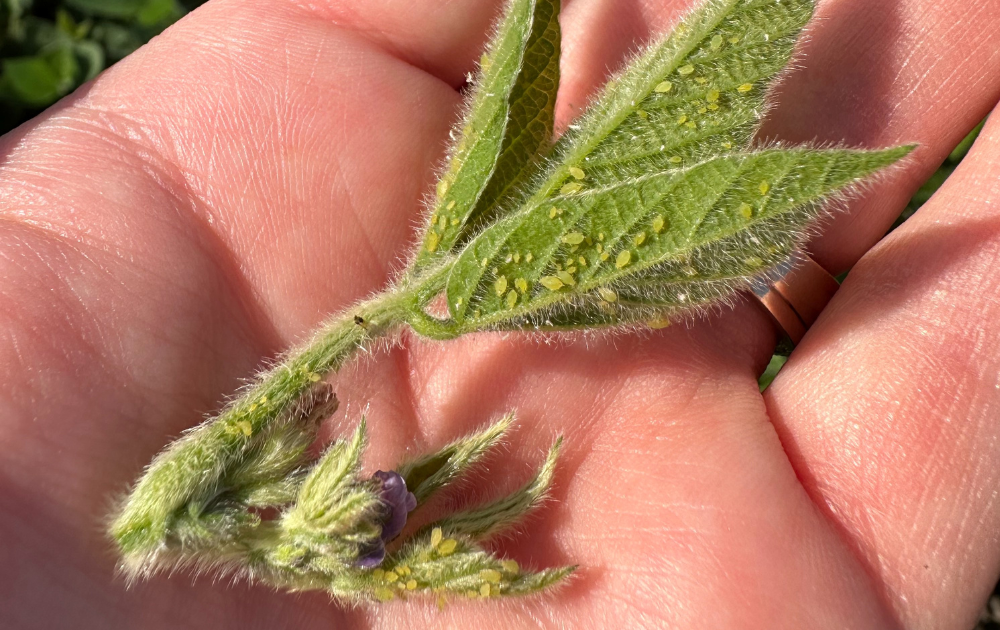As the growing season progresses, it’s crucial to keep an eye on your soybean fields for potential pest issues. Recently, we’ve noticed an increase in aphid activity, which can pose a significant threat to your crops if left unchecked.
What Are Aphids?
Aphids are small, soft-bodied insects that feed on plant sap. They can rapidly reproduce and form large colonies, leading to weakened plants and reduced yields. In soybeans, aphid infestations can cause leaves to yellow and curl, stunt plant growth, and even spread plant viruses. The soybean aphid (Aphis glycines) is considered the most significant insect pest of soybeans in regions like Minnesota, Iowa, North Dakota, and South Dakota. This pest’s ability to develop resistance to insecticides creates new challenges for effective soybean pest management and profitable soybean production.
Why Monitor Aphids?
Early detection and management are key to minimizing the impact of aphids on your crops. Aphids can quickly multiply, and high populations can cause significant damage. Regular field scouting is essential to spot aphid infestations early and take action before they become a major problem.
What to Look For to Spot Aphids
When scouting your soybean fields, look for the following signs of aphid activity:
- Clusters of small, pear-shaped insects on the undersides of leaves
- Sticky honeydew residue on leaves, which can lead to sooty mold growth
- Yellowing or curling leaves
- Stunted or deformed plant growth
Aphid Management Tips
If you notice an uptick in aphid populations, consider these management strategies:
- Insecticide Selection: Choosing the correct insecticide is crucial due to resistance issues with certain aphid populations. Pyrethroid resistance has been observed in some regions, making it essential to select insecticides with different modes of action. Refer to resources like the NDSU Guide on Managing Insecticide-Resistant Soybean Aphids for up-to-date recommendations.
- Application Timing: Apply insecticides at the most effective time, typically early in the morning or late in the evening when aphids are most active and beneficial insects are less active.
- Label Compliance: Always follow label instructions for proper application rates, timing, and safety precautions to ensure the effective and safe use of insecticides.
Reach Out for Expert Aphid Management Support
By implementing a combination of these strategies, you can effectively manage aphid populations and protect your soybean fields. For personalized advice and support, don’t hesitate to reach out to AgriMAX. Our team of experts is ready to assist you in optimizing your aphid management plan.





















